
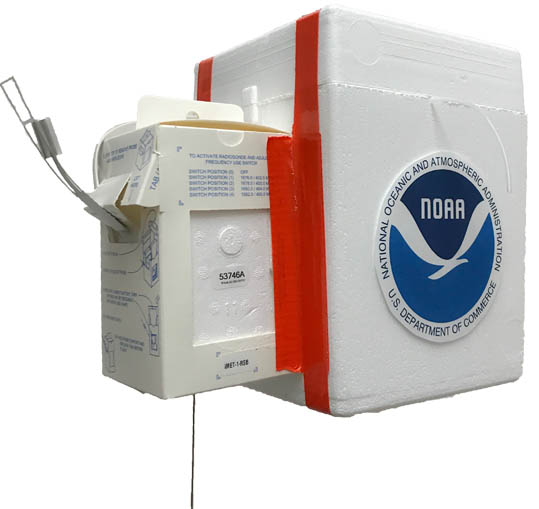
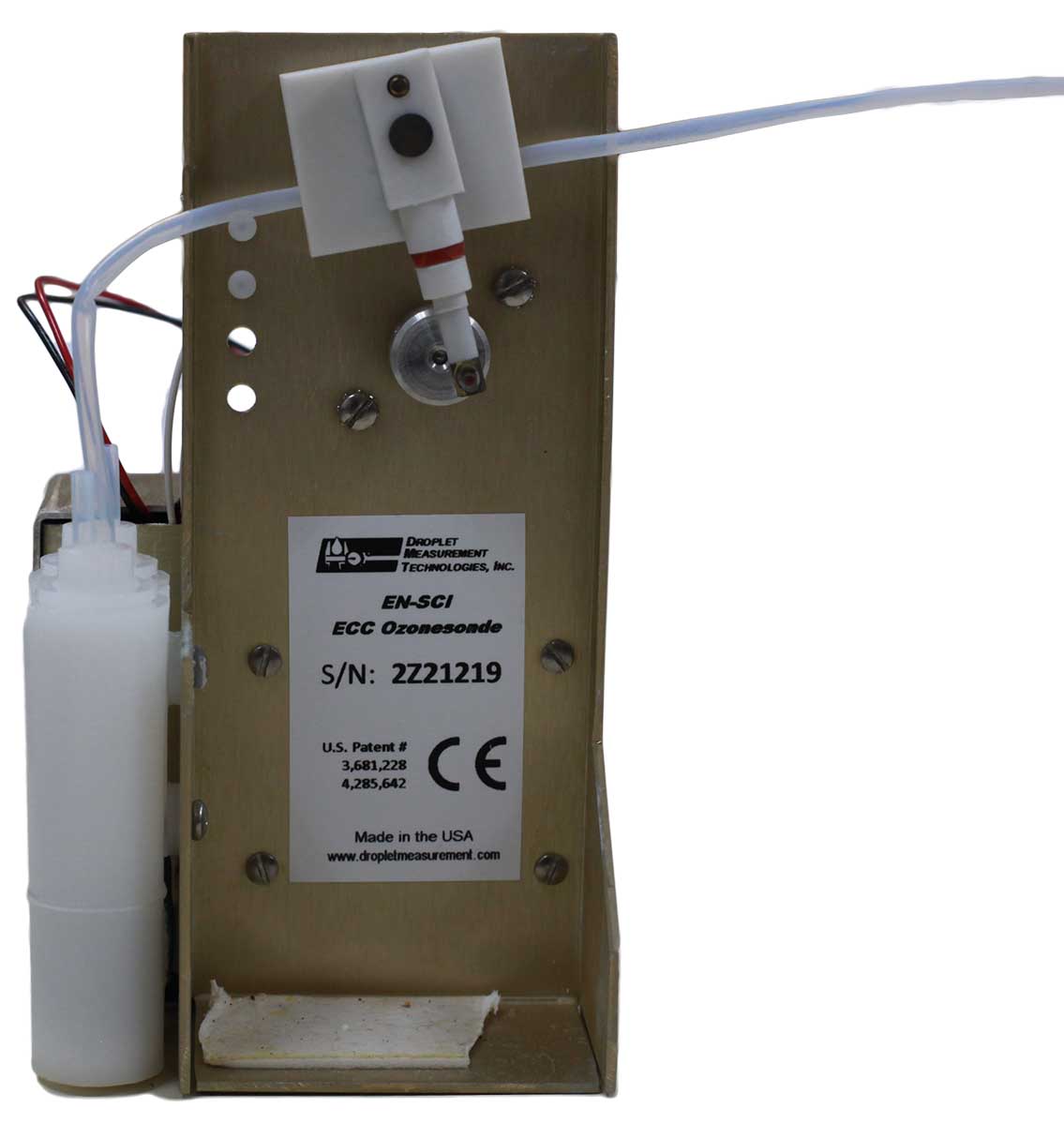
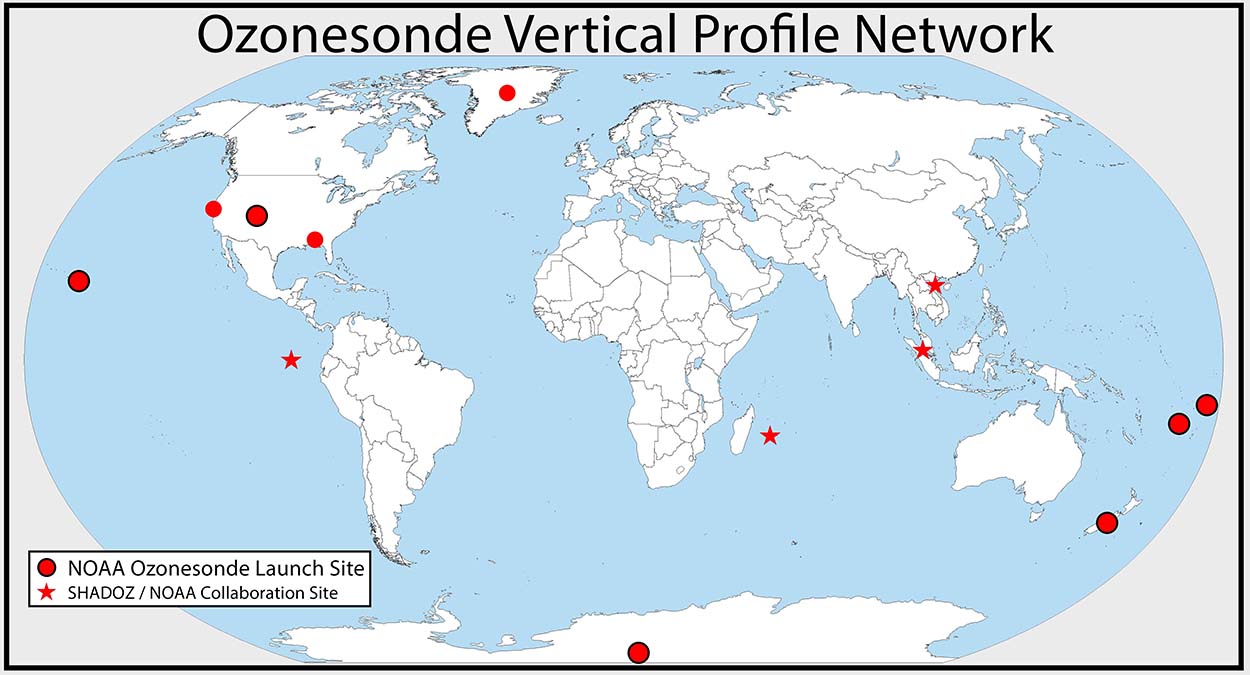
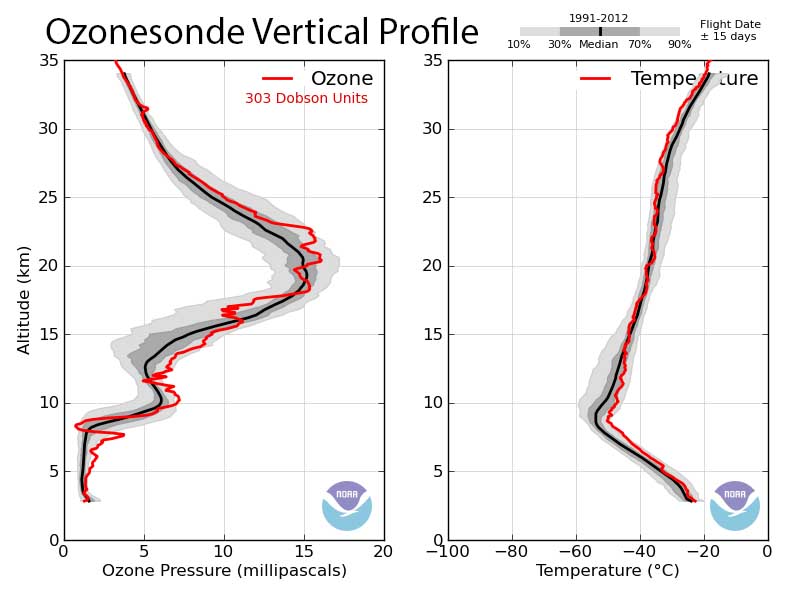
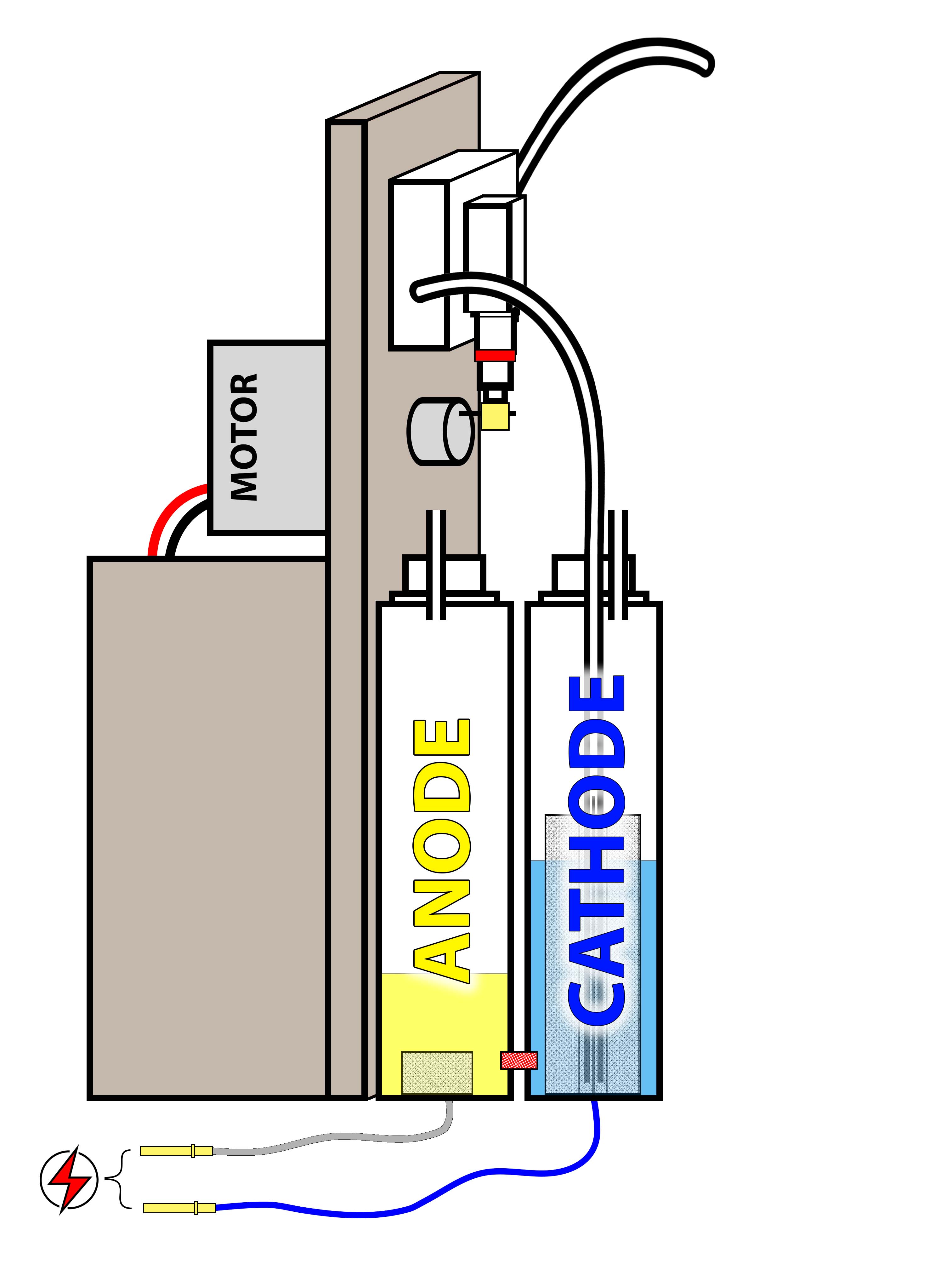
An ozonesonde consists of a Teflon air pump and electrochemical ozone sensor interfaced to a meteorological radiosonde. The small piston pump bubbles ambient air into the sensor cell containing 3 milliliters of 1% potassium iodide solution. The reaction of ozone and iodide generates an electrical signal proportional to the amount of ozone. The radiosonde measures air temperature, pressure, relative humidity and transmits all of the ozone and weather data back to a ground receiving station during the 2 hour weather balloon ascent.
Total column ozone (given in Dobson Units) is calculated by integrating the ozone partial pressure profile up to the balloon burst altitude and adding a residual amount, based on climatological ozone tables to account for ozone above the balloon burst altitude.
Polar ozonesonde profiles provide a detailed vertical measurement of ozone that can be made during low sun angle and dark time periods, when satellite ozone observations are limited. However, the cold, dark winter time will reduce the altitude burst elevation of the rubber weather balloons.

The Dobson Unit (DU) is a unit of measurement of ozone found in a column of air stretching from the surface of Earth to the edge of the atmosphere. It is given as the thickness of the layer formed by ozone molecules in a column under standard temperature and pressure. For example, 300 DU of ozone brought down to the surface of Earth at 0°C would occupy a layer only 3mm thick.
Stratospheric ozone is typically measured in three ways. Surface instruments, such as the Dobson Spectrophotometer, look at wavelengths of light absorbed by ozone to determine a “total column ozone” value. Satellites operate similarly but look at light reflected off the surface of Earth. Ozonesondes launched on high altitude balloons do not need sunlight and are the only instrument able to produce highly detailed vertical profiles of ozone.